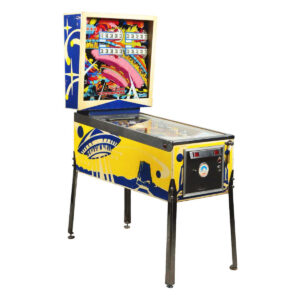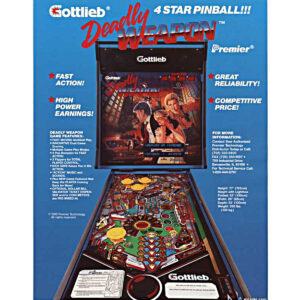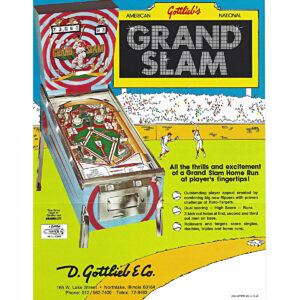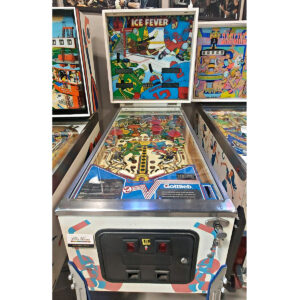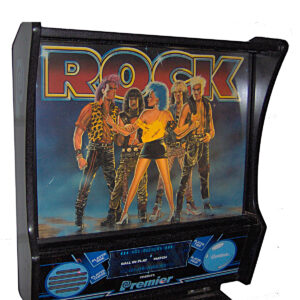Gottlieb was an American arcade game corporation and pinball manufacturer, first found in 1927, and based in Chicago. They are credited with creating the first successful coin-operated pinball machine in 1931.
Electromechanical machines started to be produced in 1935. And the 1947 development of player-actuated, solenoid-driven 2-inch bats called “flippers” revolutionized the industry. Players now had the ability to shoot the ball back up the playfield and get more points.
The flippers first appeared on a Gottlieb game called Humpty Dumpty, designed by Harry Mabs. By this time, the games also became noted for their artwork by Roy Parker.
In the late 1950s the company made more widespread use of digital score reels, making multiple player games more practical as most scoring was expressed by cluttered series of lights in the back box. The score reels eventually appeared on single-player games, now known as “wedgeheads” because of their distinctive tapering back box shape. By the 1970s the artwork on Gottlieb games was almost always by Gordon Morison, and the company had begun designing their games with longer 3-inch flippers, now the industry standard.
The company made the move into solid state machines starting in the late 1970s. Gottlieb was last to introduce a solid-state system, and last to cease manufacture of electromechanical games.



